Are you a cross-border seller feeling squeezed by unpredictable tariffs? In 2025, rising shipping costs, policy changes, and consumer demands are disrupting e-commerce like never before. This blog reveals how you adapting to new ecommerce tariffs, reducing risk, and uncovering new growth opportunities.
How Tariffs Are Disrupting Cross-border E-commerce?
Some time ago, due to the increase in tariffs, a decently profitable dress could go through the entire supply chain under the T86 clearance model without much trouble.
But at that time, the U.S. scrapped the duty-free threshold for packages under $800, shipping costs shot up, and tariffs piled on top, pushing total costs even higher. If sellers keep prices unchanged, they lose money on every sale. Raise prices to protect margins, and sales tank.
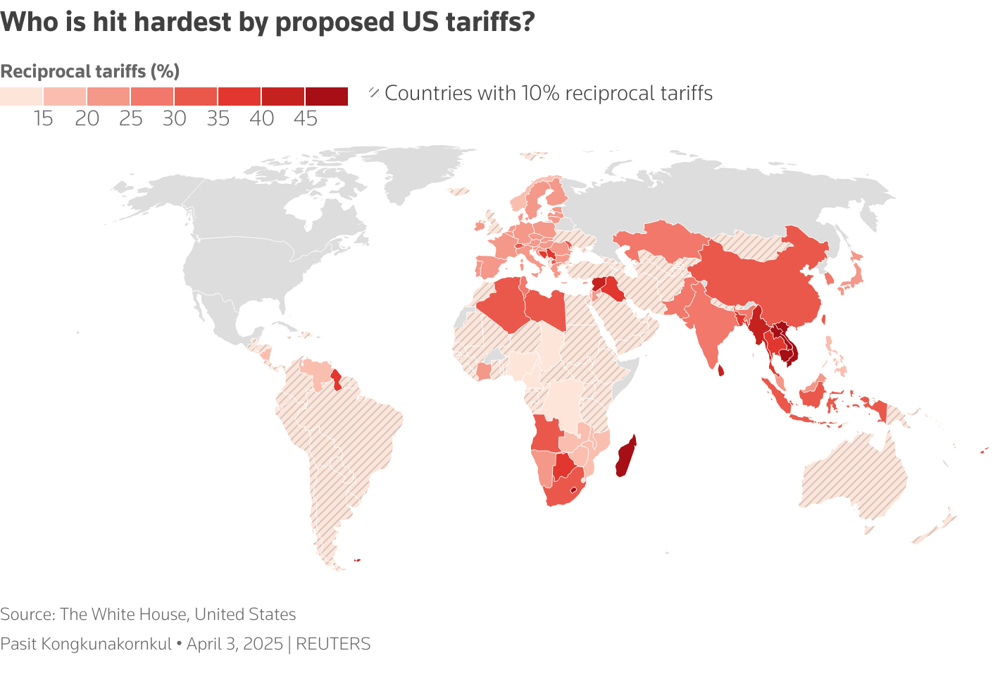
Either way, it’s a tough trade-off.
The fate of that one dress says a lot about the unpredictability of cross-border trade under policy shifts. It’s a wake-up call: brands that want to stay afloat need smarter advertising strategies to build resilience.
The impact of ecommerce tariffs has been particularly challenging, especially as businesses navigate the evolving ecommerce landscape.
How Sellers Can Navigate 2025 Ecommerce Tariff Policies?
Facing the complex challenges brought by ever-changing ecommerce tariffs, sellers must rethink their strategies on multiple fronts.
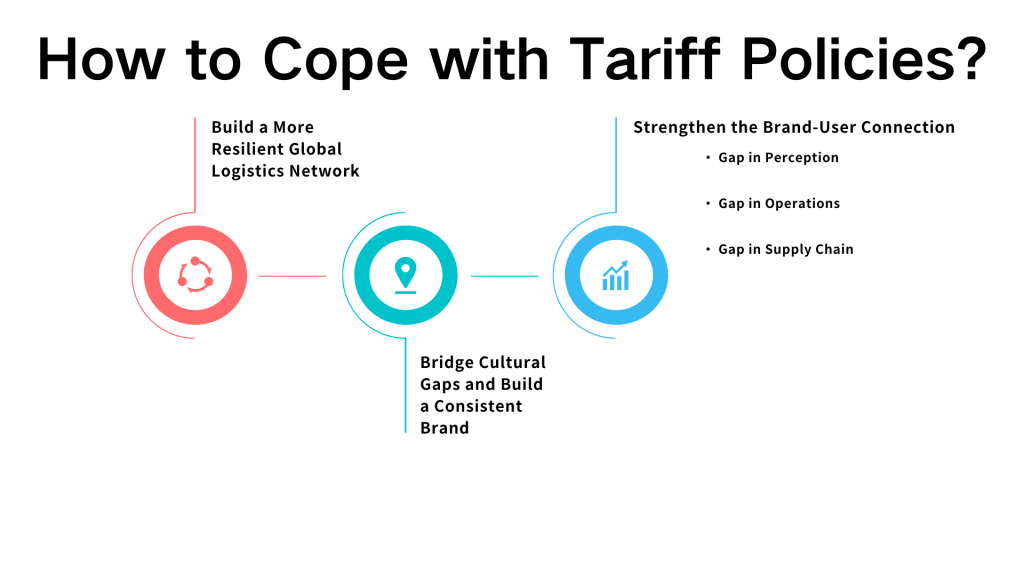
Build a More Resilient Global Logistics Network
The more unpredictable things get, the more your logistics setup is put to the test. When shipping fees, promo cycles, and payment terms change on a dime, brands with reliable, flexible logistics have the edge.
In emerging markets, infrastructure sets the ceiling. Brands that work with logistics providers who actually have local warehouses and pickup points gain visibility across the whole delivery chain.
With support from Mega Digital’s advertising services, brands can build awareness early and cushion the blow from unexpected logistics costs.
Localize Branding to Build Global Trust
In 2024, a Chinese smart appliance brand launched a “quiet fan” on Amazon, but a poor machine translation turned it into a “deathly silent” fan. U.S. customers weren’t impressed—mocking reviews flooded in, ratings dropped fast, and stock piled up.
This small translation slip showed just how hard it is to build trust across cultures. Low-cost bulk listings are no longer enough to win trust. Shoppers want identity, meaning, and emotional value—something that only a well-built brand can deliver.
Mega Digital helps brands level up the full journey, from content to engagement to conversion, bridging cultural gaps and building a better brand experience.
Strengthen the Brand-User Connection
Cross-border brands are facing a triple disconnect between themselves and their users. The only way forward is to rebuild those links across the board.
Perception Gap
Many U.S. shoppers are willing to pay more for products with traceable raw materials. But most cross-border brands fail to mention these details, reinforcing stereotypes like “cheap” or “unreliable” and killing conversions. The policies initiated by the Trump administration have had a lasting impact on current ecommerce tariffs.
Take Anker. They launched a power mod contest on Reddit, letting users reimagine product features. This not only drove engagement but also boosted repeat purchases.
Only by using data to understand user perceptions can a brand break stereotypes and stand out.
Operational Gap
On TikTok, cross-border sellers consistently have lower video completion rates than local brands.
Why? Cultural mismatches, aesthetic differences, but ultimately, it’s a research problem.
What brands really need are sharper targeting strategies and local ad support.
Mega Digital offers an all-in-one solution, from media buying to strategy to optimization, helping sellers win more market share and drive results.

Supply Chain Gap
Custom products are hot, but long sample cycles and slow shipping turn customers off. In the end, many choose local brands just to get faster delivery.
Xiaomi, for example, opened a tech café in New York, combining robots and coffee to create an interactive experience. It boosted online search traffic and helped them stand out.
Key Ecommerce Tariff Trends in 2025
Silver Economy and Demand Mismatch
Older adults make up a significant portion of internet users. Businesses should pay more attention to their needs, especially health, convenience, and companionship.
However, current products are often too complex, with small fonts and user-unfriendly designs, creating a mismatch that results in low conversion rates.
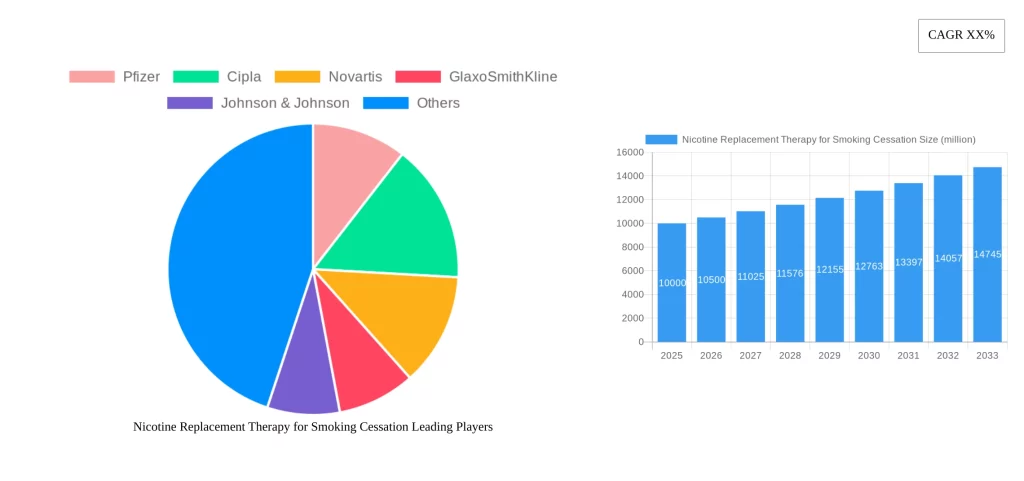
If sellers can truly design from the perspective of older users, like prioritizing simplicity, practicality, and emotional connection, they can increase product value and gain first-mover advantages.
The Long-Tail Potential of Reputation-Driven Markets
In today’s e-commerce landscape, reputation drives traffic. Long-tail products that previously had low volume and visibility are now achieving unexpected sales growth through excellent service, low return rates, and high ratings.
Platforms tend to favor such products in their algorithms, as they contribute positively to the ecosystem. Cross-border sellers that focus on after-sales support and user experience will be better positioned to unlock the long-tail market and build strong customer loyalty.
Sustainable Branding
Many consumers are willing to pay more for eco-friendly products. With the global market for sustainable goods expanding rapidly, brands should use biodegradable or recyclable materials and eliminate excessive packaging to reinforce their environmental values and shape brand perception at a low cost.
AI Tools for Smarter Scaling
Precision Targeting and Outreach
AI enables more refined customer segmentation and automated operations. For example, WADesk’s free WhatsApp Group Finder can crawl WhatsApp groups and contacts based on keywords and send bulk messages to potential leads, significantly boosting conversion rates.
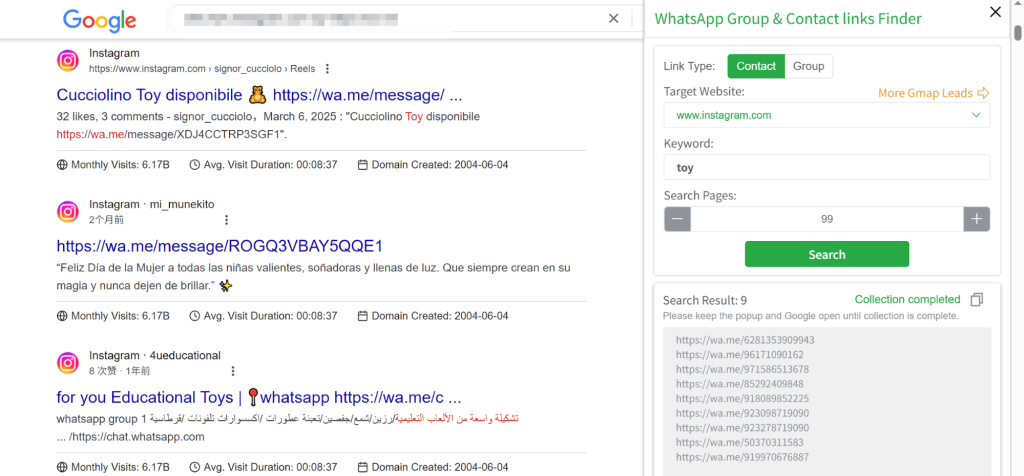
Improve Communication Efficiency
Efficient communication is key to growth. Language barriers and delayed responses often lower conversion rates. WADesk , a lightweight AI customer engagement tool for WhatsApp, supports 134 languages through text and voice translation, using native expressions to reduce misunderstandings caused by cultural differences.

Time zone differences make it hard for brands to respond to customers around the clock. Auto-reply features ensure that common questions are answered promptly, improving response speed and saving customer support resources.
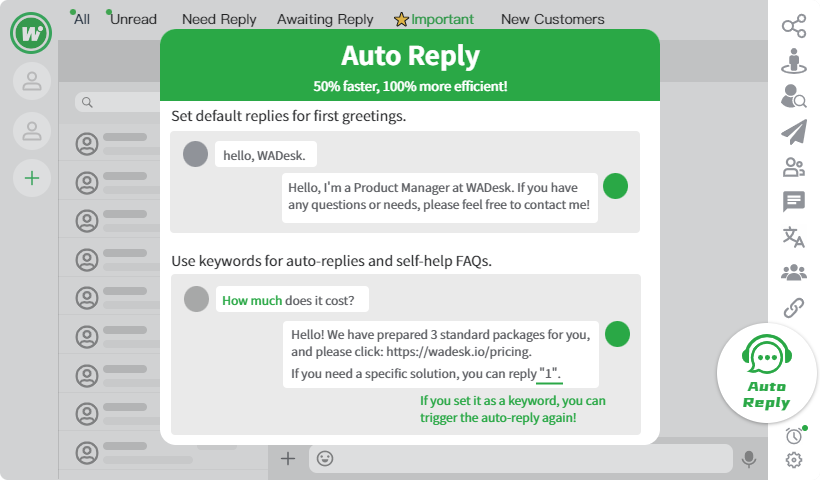
For repetitive tasks such as order tracking, return policies, or shipping timelines, Quick Reply allows agents to select and send pre-written messages, saving time and maintaining consistency across teams.
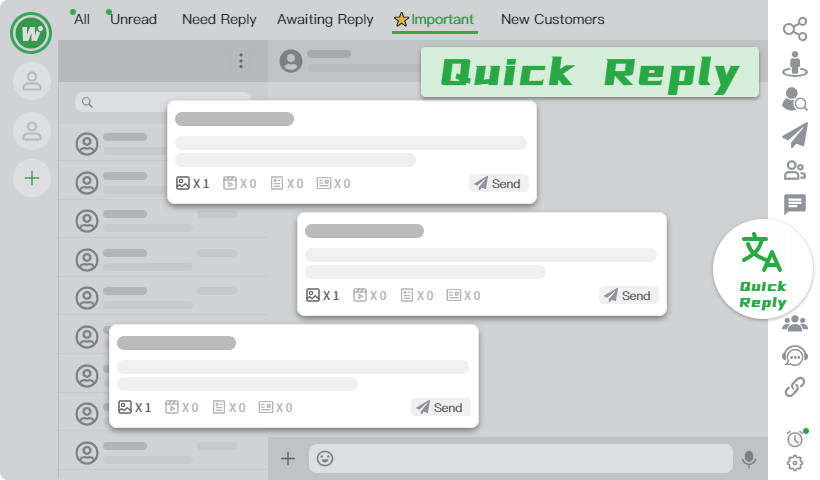
Multi-Channel Integration
With increasing channel fragmentation, brands must maintain consistent messaging and customer relationships across platforms.
WhatsApp diversion link can direct users to specific agents or groups, export customer data, and deliver tailored services without losing any leads. WADesk also supports real-time data tracking to help businesses refine their marketing strategies and improve conversion.
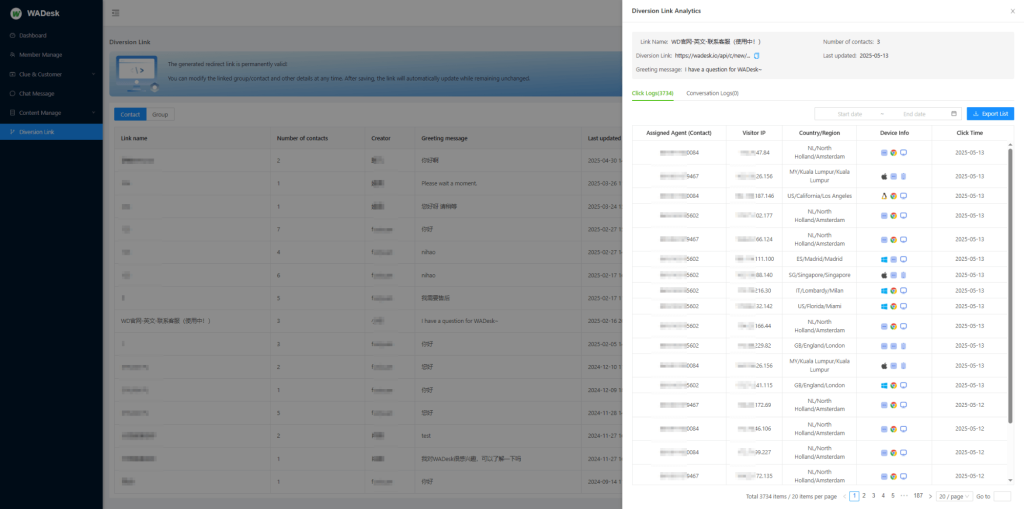
Build Your Forever Customers List with Content
- Build WhatsApp Groups: Combine product promotions, valuable resources, and engaging activities to boost group engagement.
- Regularly Post Content: Group vitality depends on frequent, high-quality content. Use WhatsApp bulk sender to broadcast content to multiple groups, increasing retention and creating high-value communities where customers become advocates.
- Monitor Data and Get Real-Time Feedback: Track read and reply rates after sending messages. Use team dashboards to assess marketing performance and align content with user interests.
- Optimize Campaign Strategies: Adjust strategies based on feedback. Refine group promotions and interaction styles to improve effectiveness and drive private domain conversion.
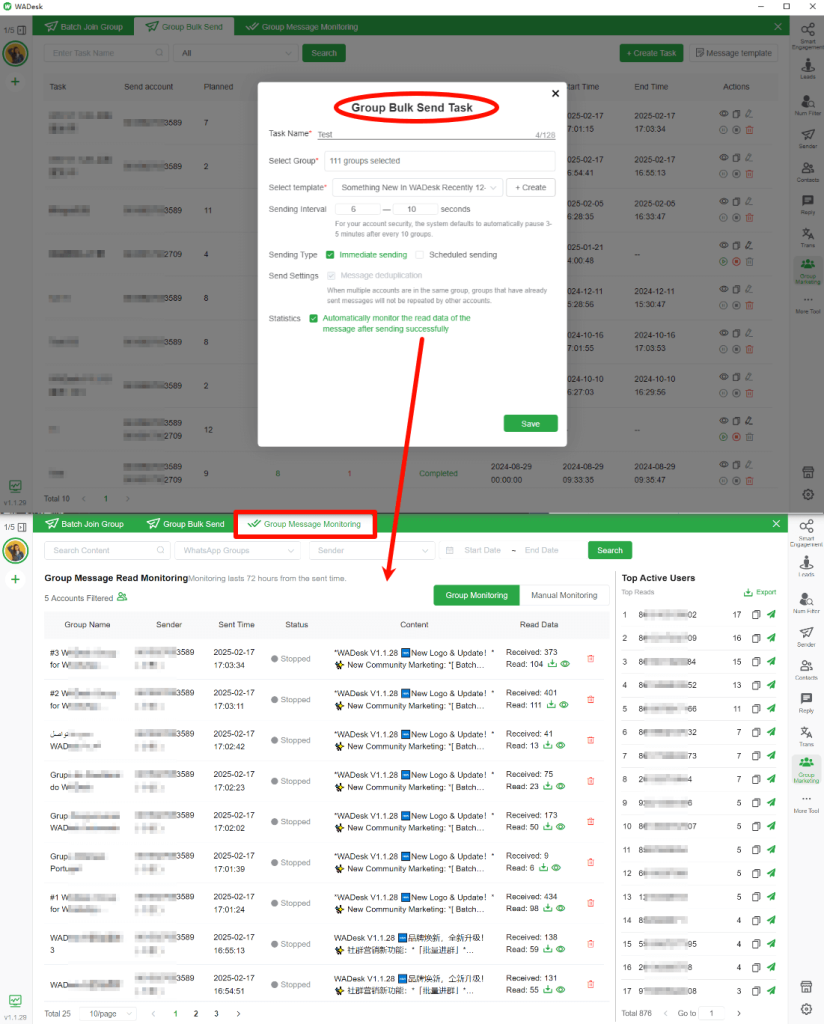
Explore a Low-Asset Path for Cross-Border Success
Facing the high investment and high uncertainty in overseas markets, cross-border merchants can break through the situation through a light-asset approach.
For instance, sellers can focus on new and unique small items to quickly test the waters, and combine WADesk to simplify customer service, marketing, and private domain management processes, accelerating the low-cost overseas expansion of the brand.
This tariff adjustment event reflects that e-commerce enterprises must possess a dual perspective. They need to grasp the certainty of macro trends as well as capture the changing points of micro demands, to find breakthroughs in the changes and achieve sustainable growth.
Mega Digital, with its professional services and rich experience, can provide strong support for cross-border e-commerce enterprises, helping them cope with challenges, seize opportunities, and move forward steadily.









